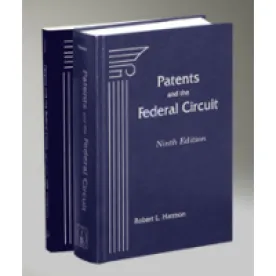Power Integrations v. Lee
In a decision with potentially far-reaching impact, U.S. Court of Appeals for the Federal Circuit concluded that the Board of Patent Appeals and Interferences (Board) in arriving at a claim constructions, is obligated to consider a prior district court construction of the same term. Power Integrations v. Lee, Case No. 14-1123 (Fed. Cir., Aug. 12, 2015) (Mayer, J.).
Power Integrations (PI) challenged the PTO’s decision affirming the final rejection of claims during an ex parte reexamination that Fairchild had filed against a patent directed to a technique of minimizing electromagnetic interference occurring in power supplies. PI had brought suit against Fairchild alleging infringement of the patent. During the district court claim construction proceedings PI argued that the claim term “coupled” required that two circuits be connected in a manner “such that voltage, current, or control signals pass from one to another” and that the recited coupling between circuit components must be “present for the purposes of control.” PI also made clear that its proposed construction did not require a direct connection between circuit elements. The district court adopted PI’s proposed construction. After a trial on validity, a jury found that the patent was not obvious over a primary reference, that verdict was affirmed by the Federal Circuit on appeal.
During the reexamination, the examiner rejected claims of the patent as being anticipated by the same reference found to not have rendered the claim obvious in the district court litigation. In affirming the rejection, the Board stated that PI “appear[ed] to argue that one of ordinary skill in the art would understand the term ‘coupled to’ to restrict device connections to exclude intervening components.” PI appealed.
On appeal, the Federal Circuit found that the Board’s patentability analysis was deficient under the Administrative Procedure Act (APA), providing too little for review. The Court explained that “[u]nder the APA, the board is obligated not only to come to a sound decision, but to fully and particularly set out the bases upon which it reached that decision.” The Court found that in this instance, the Board had “fundamentally misconstrued Power Integrations’ primary claim construction argument” namely that the term “coupled” did not exclude intervening components between circuit elements. Because so much of the Board’s analysis had focused on the issue of whether “coupled” required a direct connection between circuit elements, the Court explained that the Board had inadequately evaluated PI’s primary argument. The Federal Circuit further explained that while the Board uses a different claim construction standard, i.e., the broadest reasonable interpretation in light of the specification (BRI), than district courts, the Board should have reviewed the district court’s claim construction, since PI had advanced the same construction as the Patent and Trademark Office as it did in the parallel litigation: “[t]he fact that the board is not generally bound by a previous judicial interpretation of a disputed claim term does not mean . . . that it has no obligation to acknowledge that interpretation or to assess whether it is consistent with the broadest reasonable construction of the term.” The Court qualified its decision by noting “[w]e do not hold that the board must in all cases assess a previous judicial interpretation of a disputed claim term” but rather “only that the board on remand should carefully and fully assess whether the disputed claims of the . . . patent are anticipated by the prior art, setting out its reasoning in sufficient detail to permit meaningful appellate review.”
Practice Note: While this decision arose from an ex parte reexamination, it is likely that the same rational would apply to post-grant proceedings under the America Invents Act (AIA) in those situations where a prior district court construction, based on the same claim construction arguments, was available from a parallel litigation.




 />i
/>i

